Christopher Nolan’s film “Oppenheimer” has focused new attention on the legacies of the Manhattan Project – the World War II program to develop nuclear weapons. As the anniversaries of the bombings of Hiroshima and Nagasaki on Aug. 6 and Aug. 9, 1945, approach, it’s a timely moment to look further at dilemmas wrought by the creation of the atomic bomb.
The Manhattan Project spawned a trinity of interconnected legacies. It initiated a global arms race that threatens the survival of humanity and the planet as we know it. It also led to widespread public health and environmental damage from nuclear weapons production and testing. And it generated a culture of governmental secrecy with troubling political consequences.
As a researcher examining communication in science, technology, energy and environmental contexts, I’ve studied these legacies of nuclear weapons production. From 2000 to 2005, I also served on a citizen advisory board that provides input to federal and state officials on a massive environmental cleanup program at the Hanford nuclear site in Washington state that continues today.
Hanford is less well known than Los Alamos, New Mexico, where scientists designed the first atomic weapons, but it was also crucial to the Manhattan Project. There, an enormous, secret industrial facility produced the plutonium fuel for the Trinity test on July 16, 1945, and the bomb that incinerated Nagasaki a few weeks later. (The Hiroshima bomb was fueled by uranium produced in Oak Ridge, Tennessee, at another of the principal Manhattan Project sites.)
Later, workers at Hanford made most of the plutonium used in the U.S. nuclear arsenal throughout the Cold War. In the process, Hanford became one of the most contaminated places on Earth. Total cleanup costs are projected to reach up to US$640 billion, and the job won’t be completed for decades, if ever.
Victims of nuclear tests
Nuclear weapons production and testing have harmed public health and the environment in multiple ways. For example, a new study released in preprint form in July 2023 while awaiting scientific peer review finds that fallout from the Trinity nuclear test reached 46 U.S. states and parts of Canada and Mexico.
Dozens of families who lived near the site – many of them Hispanic or Indigenous – were unknowingly exposed to radioactive contamination. So far, they have not been included in the federal program to compensate uranium miners and “downwinders” who developed radiation-linked illnesses after exposure to later atmospheric nuclear tests.
On July 27, 2023, however, the U.S. Senate voted to extend the Radiation Exposure Compensation Act and expand it to communities near the Trinity test site in New Mexico. A companion bill is under consideration in the House of Representatives.
The largest above-ground U.S. tests, along with tests conducted underwater, took place in the Pacific islands. Meanwhile, the Soviet Union and other nations conducted their own testing programs. Globally through 2017, nuclear-armed nations exploded 528 weapons above ground or underwater, and an additional 1,528 underground.
Estimating how many people have suffered health effects from these tests is notoriously difficult. So is accounting for disruptions to communities that were displaced by these experiments.
Polluted soil and water
Nuclear weapons production has also exposed many people, communities and ecosystems to radiological and toxic chemical pollution. Here, Hanford offers troubling lessons.
Starting in 1944, workers at the remote site in eastern Washington state irradiated uranium fuel in reactors and then dissolved it in acid to extract its plutonium content. Hanford’s nine reactors, located along the Columbia River to provide a source of cooling water, discharged water contaminated with radioactive and hazardous chemicals into the river through 1987, when the last operating reactor was shut down.
Extracting plutonium from the irradiated fuel, an activity called reprocessing, generated 56 million gallons of liquid waste laced with radioactive and chemical poisons. The wastes were stored in underground tanks designed to last 25 years, based on an assumption that a disposal solution would be developed later.
Seventy-eight years after the first tank was built, that solution remains elusive. A project to vitrify, or embed tank wastes in glass for permanent disposal, has been mired in technical, managerial and political difficulties, and repeatedly threatened with cancellation.
Now, officials are considering mixing some radioactive sludges with concrete grout and shipping them elsewhere for disposal – or perhaps leaving them in the tanks. Critics regard those proposals as risky compromises. Meanwhile, an estimated 1 million gallons of liquid waste have leaked from some tanks into the ground, threatening the Columbia River, a backbone of the Pacific Northwest’s economy and ecology.
Radioactive trash still litters parts of Hanford. Irradiated bodies of laboratory animals were buried there. The site houses radioactive debris ranging from medical waste to propulsion reactors from decommissioned submarines and parts of the reactor that partially melted down at Three Mile Island in Pennsylvania in 1979. Advocates for a full Hanford cleanup warn that without such a commitment, the site will become a “national sacrifice zone,” a place abandoned in the name of national security.
A culture of secrecy
As the movie “Oppenheimer” shows, government secrecy has shrouded nuclear weapons activities from their inception. Clearly, the science and technology of those weapons have dangerous potential and require careful safeguarding. But as I’ve argued previously, the principle of secrecy quickly expanded more broadly. Here again, Hanford provides an example.
Hanford’s reactor fuel was sometimes reprocessed before its most-highly radioactive isotopes had time to decay. In the 1940s and 1950s, managers knowingly released toxic gases into the air, contaminating farmlands and pastures downwind. Some releases supported an effort to monitor Soviet nuclear progress. By tracking deliberate emissions from Hanford, scientists learned better how to spot and evaluate Soviet nuclear tests.
In the mid-1980s, local residents grew suspicious about an apparent excess of illnesses and deaths in their community. Initially, strict secrecy – reinforced by the region’s economic dependence on the Hanford site – made it hard for concerned citizens to get information.
Once the curtain of secrecy was partially lifted under pressure from area residents and journalists, public outrage prompted two major health effects studies that engendered fierce controversy. By the close of the decade, more than 3,500 “downwinders” had filed lawsuits related to illnesses they attributed to Hanford. A judge finally dismissed the case in 2016 after awarding limited compensation to a handful of plaintiffs, leaving a bitter legacy of legal disputes and personal anguish.
Cautionary legacies
Currently active atomic weapons facilities also have seen their share of nuclear and toxic chemical contamination. Among them, Los Alamos National Laboratory – home to Oppenheimer’s original compound, and now a site for both military and civilian research – has contended with groundwater pollution, workplace hazards related to the toxic metal beryllium, and gaps in emergency planning and worker safety procedures.
As Nolan’s film recounts, J. Robert Oppenheimer and many other Manhattan Project scientists had deep concerns about how their work might create unprecedented dangers. Looking at the legacies of the Trinity test, I wonder whether any of them imagined the scale and scope of those outcomes.
William J Kinsella, Ph.D., is Professor Emeritus, Department of Communication, North Carolina State University.
The Conversation is an independent and nonprofit source of news, analysis and commentary from academic experts.
© The Conversation




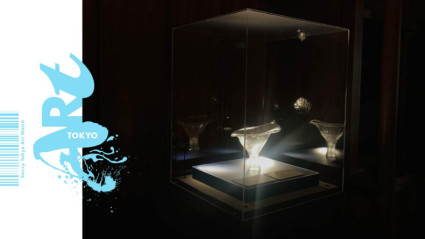
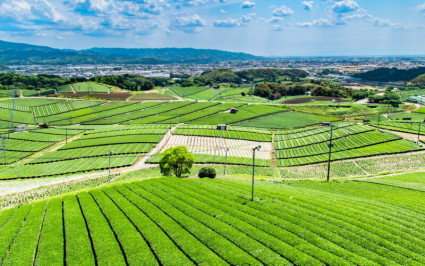


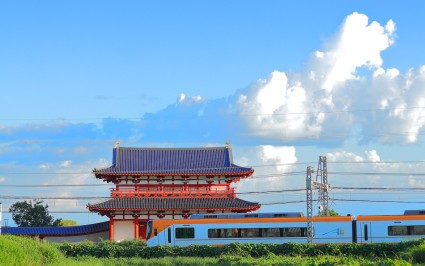
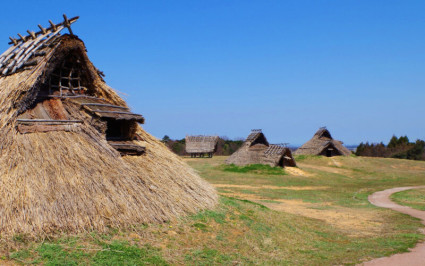


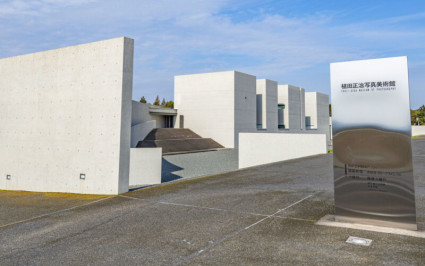

14 Comments
Login to comment
sakurasuki
Making destructive weapon and become victim of its own toxic in the process.
TaiwanIsNotChina
It's in a pretty remote area. Somebody had to lead the way in developing radioactive waste handling practices.
kurisupisu
And when things go wrong at NPPs then the contamination lasts thousands of years
sakurasuki
How many family life were being destroyed because those people have their family member(s) suffer from cancer and even multiple cancers. From lung cancer, thyroid, breast, and other type of cancers. While government and companies that responsibility failed to tell them, not until victims sued all responsible parties then all parties that are being responsible finally open up.
https://www.seattletimes.com/seattle-news/higher-cancer-risk-seen-for-ex-hanford-workers/
https://www.nbcnews.com/news/us-news/welcome-most-toxic-place-america-n689141
https://academic.oup.com/jnci/article/94/14/1046/2519823
Hanford is not the only one.
https://www.cbsnews.com/news/70-years-after-atomic-bomb-test-new-mexico-residents-still-affected/
EvilBuddha
The Soviets chose Semipalatinsk for their nuclear tests which is now Semey in Kazakhstan. So the Russians have washed their hands off the problem.
EvilBuddha
For understanding what kind of mutants can result from nuclear testing one can watch 'The Hills have Eyes' and 'Godzilla'.
sakurasuki
Unfortunately that's not true, all you have just sick people from poisoning. Some people just live short enough after incident just like Chernobyl mini series, others live long enough while suffering for the rest of their life like people in Johny Deep's Minamata movie.
TaiwanIsNotChina
I guess we should shut down all of the enrichment activities because someone might get cancer in 50 years /s
Luis David Yanez
This article and comment section is a sad reminder of how little people actually understand, or even care to understand radiation, nuclear contamination or any topics around nuclear power.
Because, unless you were directly affected by the initial radiation blast, giving you radiation poisoning, or some other illness very easily linked to it, all other type of radiation will conform to what is generally known as the "Background radiation" of earth, and it's very difficult to pinpoint the source of the single gama particle that caused your colon cancer as either part of one of the gama particles from the radioactive particles created after a nuclear test, or natural background radiation from the uranium rich soil of your back yard, or from a supernova that exploded billons of lights years away.
That's why you usually use statistics to compare rates with a baseline, and if the baseline hasn't moved that much, then the effects are seen as negligible.
Still, some people do not like this scientific way of doing things and continue to claim that all of the cancer from some specific area that was near a nuclear site or something like that is because of the test, without any evidence, but still claim it, and then articles like these make it seem like the scientific consensus and the anti-nuclear guy that made a bad statistic to say radiation is killing people are just as valid, make it "controversial", and therefore people continue to have an exaggerated perception of radiation risk.
There is non radioactive contamination that is as bad or worse for humans, that is also invisible, that has left places in France completely uninhabited and with restrictions (google "zone rouge"), and that even though you cannot actually measure as easy as radiation, making it even more "invisible" and dangerous than radioactive contamination, people do not care as much as they do about radiation, because of the constant anti-nuclear propaganda.
TaiwanIsNotChina
I can reply for you. Yes, nuclear waste handling procedures from the 40s are not going to be quite the same as in 2023.